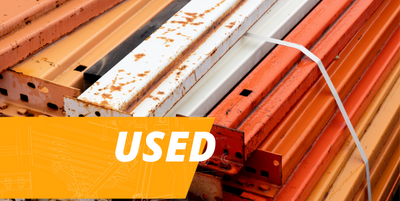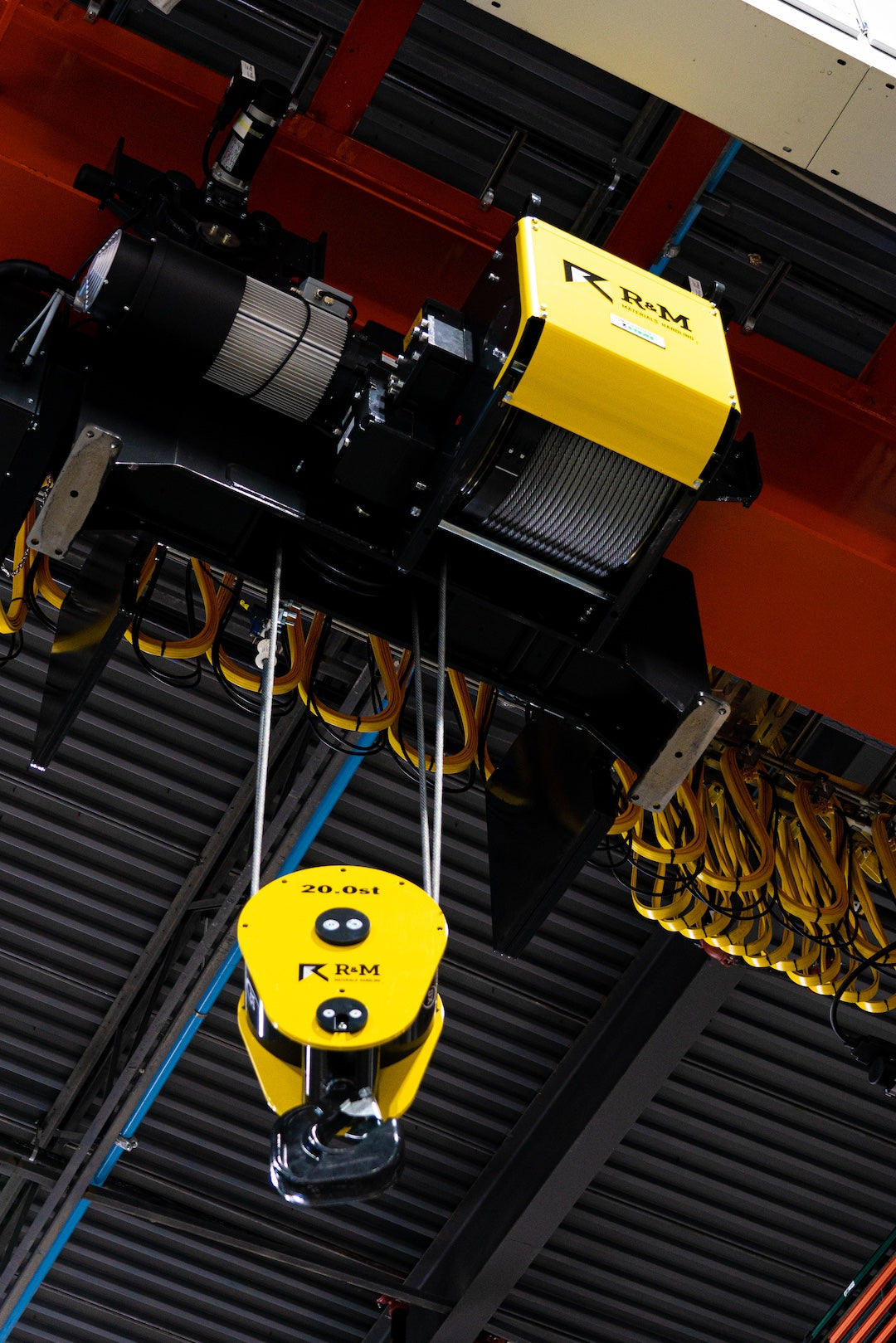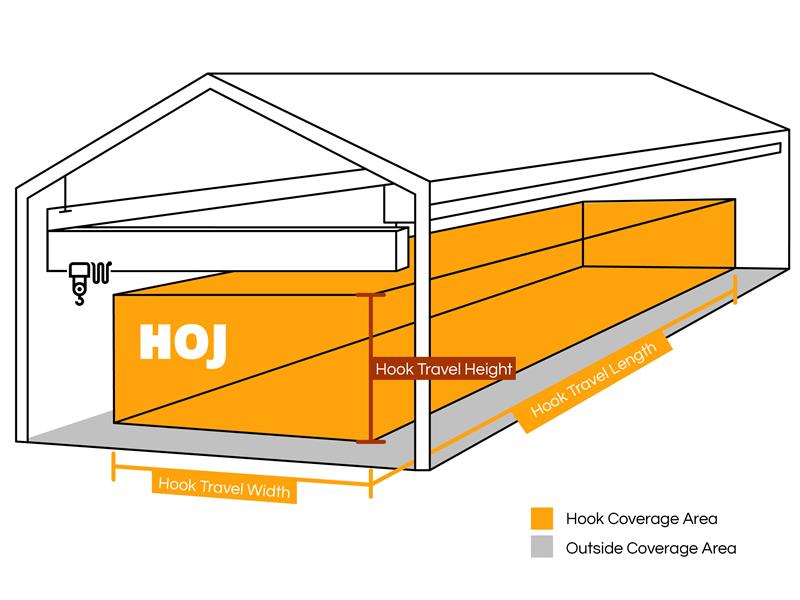Your Cart is Empty

Industrial Shelving: The backbone of warehouse storage
In the fast-paced world of warehousing and material handling, making the most of your available space is not just an option—it's a necessity. At Hoj Innovations, we understand that today's warehouses are bustling hubs of activity that house more inventory than ever before. Yet, a staggering 80% of warehouse space isn't utilized to its full potential. This is where the strategic implementation of industrial shelving comes into play, serving as a cornerstone for efficient storage and organization, thus boosting employee productivity and operational efficiency.
Understanding the Power of Industrial Shelving
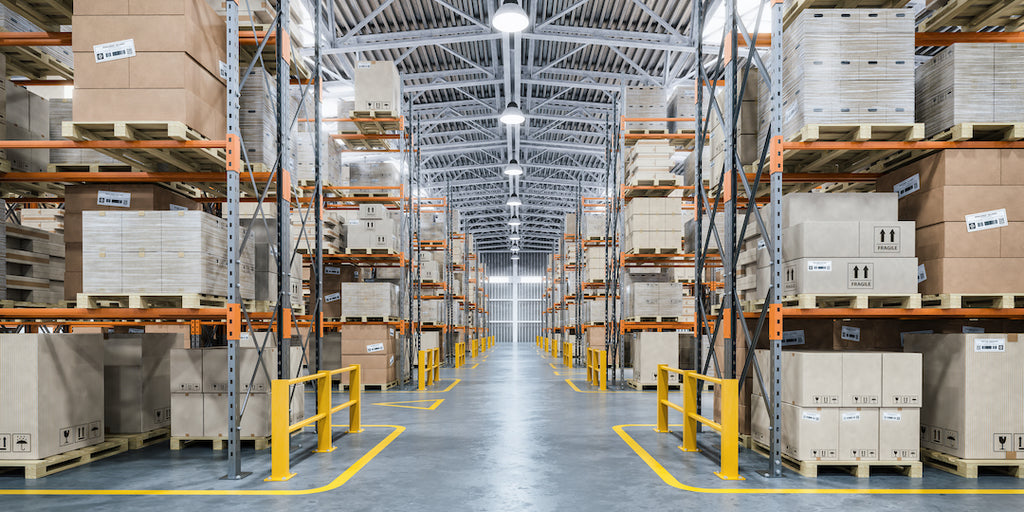
Industrial shelving isn't just a means of storing goods; it's a strategic component integral to the optimization of warehouse operations. When thoughtfully integrated into warehouse design, industrial shelving can transform an underused or outdated space into a highly efficient storage area. Below, we dive deeper into the considerations for incorporating industrial shelining into your warehouse, highlighting its importance in improving organization, accessibility, and overall operational flow.
Warehouse Layout and Space Utilization
A well-thought-out warehouse layout is crucial for maximizing efficiency and productivity. Industrial shelving should be configured to make the most of both vertical and horizontal space, tailored to fit the unique dimensions and features of your warehouse. This includes:
- Evaluating your current space utilization to identify areas where shelving can help consolidate inventory and reduce clutter.
- Considering the flow of operations, ensuring that shelving placements enhance, rather than hinder, the movement of goods and employees through the warehouse.
- Implementing modular and adjustable shelving systems that can be reconfigured as needs change, ensuring long-term flexibility and adaptability.
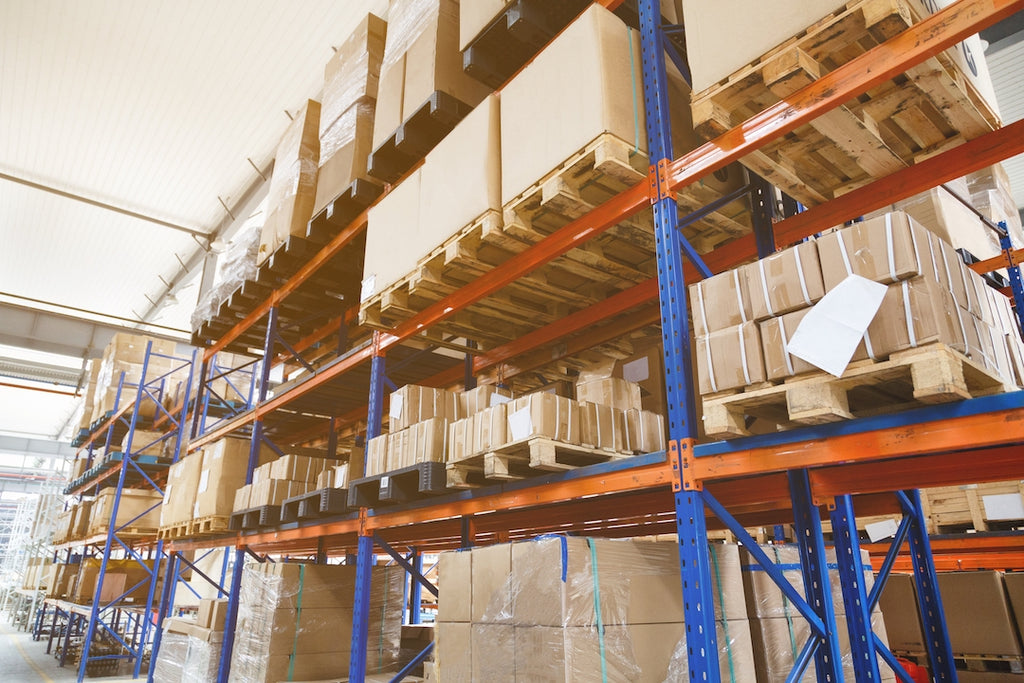
Inventory Needs
The diversity of inventory in modern warehouses requires a versatile approach to shelving. Each type of item may have unique storage needs based on its size, weight, and frequency of access:
- Small and lightweight items might benefit from high-density shelving options that allow for easy sorting and retrieval without wasting space.
- Large or bulky items require more robust shelving solutions, such as cantilever racking, which provides the necessary support and accessibility.
- High-throughput or frequently accessed items should be stored in a manner that minimizes retrieval times, possibly through dynamic or mobile shelving systems.
Understanding the characteristics of your inventory allows you to choose the shelving solution that best matches your operational requirements, optimizing both space and efficiency.
Safety and Compliance
The importance of safety in the warehouse cannot be overstated. Industrial shelving must be selected and installed with a keen eye on creating a safe working environment:
- Adherence to local and national safety codes is non-negotiable. This includes ensuring that shelving systems are capable of safely bearing the load they will carry and are protected against potential hazards, such as earthquakes or structural failures.
- Regular inspections and maintenance of shelving units are essential to identify and address wear and tear, damages, or any alterations in structural integrity over time.
- Employee training on the proper use of shelving systems, including safe loading and unloading practices, is critical to preventing accidents and injuries.
Environmental Considerations
Environmental factors play a significant role in the selection of industrial shelving, especially in warehouses that store temperature-sensitive or perishable goods:
- Climate control compatibility: Choose shelving that facilitates proper air circulation and is made from materials that withstand the conditions in climate-controlled zones.
- Resistance to corrosion and damage: In environments with high humidity or the presence of corrosive materials, shelving should be constructed from materials that resist rust and corrosion.
- Sustainability: Consider the environmental impact of your shelving materials and opt for solutions that are durable, recyclable, or made from recycled materials to reduce your carbon footprint.
By addressing these considerations—warehouse layout and space utilization, inventory needs, safety and compliance, and environmental factors—you ensure that the integration of industrial shelining into your warehouse not only maximizes space and efficiency but also supports a safe, compliant, and sustainable operation.
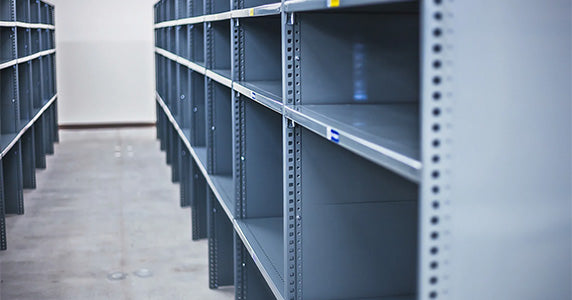
Types of Industrial Shelving
When exploring industrial shelving options, understanding the unique benefits and applications of each type can significantly enhance your warehouse's operational efficiency and storage capacity. Below, we delve deeper into four popular types of industrial shelving, discussing their features, advantages, and ideal use cases in greater detail.
Selective Pallet Racking
Features and Advantages: Selective pallet racking is widely recognized for its adaptability and ease of access. Its design allows for direct access to every pallet, simplifying inventory management and enabling easy adjustments to accommodate various pallet sizes and weights. This system is particularly beneficial in warehouses handling a diverse inventory, as it supports the efficient organization of products with varying turnover rates.
Ideal Use Cases: Selective pallet racking is suited to environments with a wide assortment of SKUs, especially where rapid access to all items is crucial. Its versatility makes it a fit for sectors ranging from retail to manufacturing, facilitating smooth operations in both high-throughput and slower-paced settings.
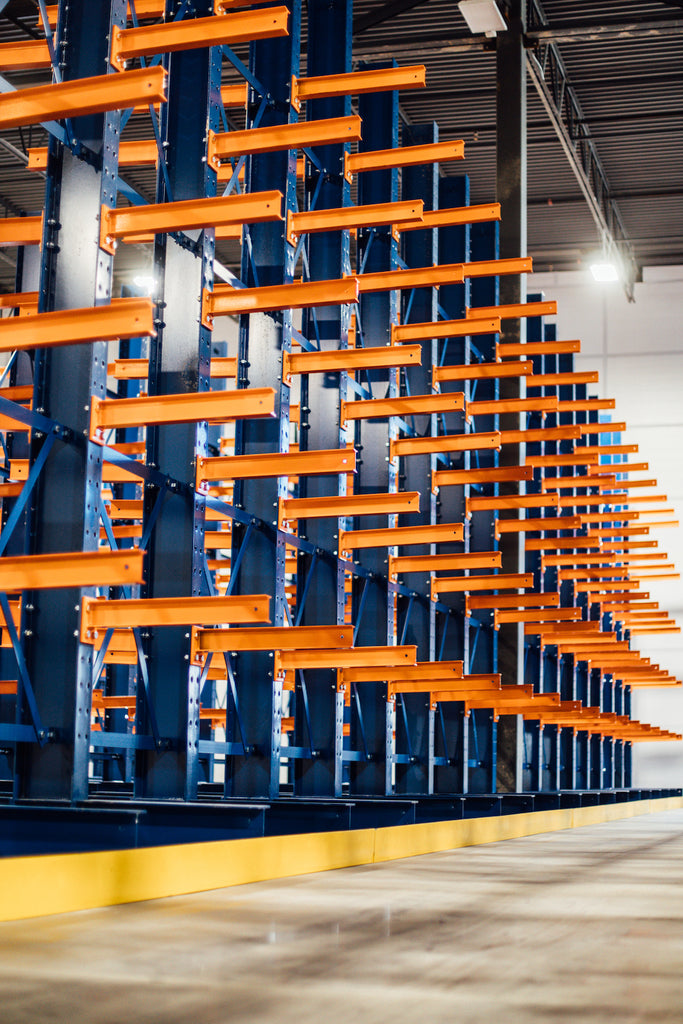
Cantilever Racking
Features and Advantages: Cantilever racking stands out for its ability to store long, cumbersome items without the constraint of front columns, thus maximizing usable storage space and accessibility. Its adjustable arms can be tailored to different lengths, offering a customizable solution for awkwardly shaped goods. This type of racking is built to endure heavy loads, making it a durable option for specialized storage needs.
Ideal Use Cases: This shelving system is perfect for warehouses that store bulky, long items such as timber, steel bars, pipes, and sheets of material. Its open design not only facilitates easy item retrieval but also improves inventory visibility, which is essential for quick operations and inventory checks.
Wire Shelving
Features and Advantages: Wire shelving provides excellent ventilation and light penetration, making it ideal for storing items that require air circulation or are sensitive to moisture. The open-wire design helps reduce dust accumulation, maintaining cleaner shelves and products. Additionally, wire shelving is typically easy to assemble and reconfigure, offering flexibility to meet changing storage needs.
Ideal Use Cases: Wire shelving is highly versatile, supporting uses in a variety of settings, including food storage, medical supplies, and electronics. It's particularly beneficial in clean rooms, refrigerated storage areas, and any environment where hygiene is a priority due to its easy-to-clean surface and moisture resistance.
Dynamic Industrial Shelving
Features and Advantages: Dynamic shelving systems, such as push-back, gravity flow, and mobile shelving units, optimize storage space by minimizing aisle space and enabling high-density storage. These systems are designed to increase storage capacity and reduce retrieval times, as they allow for more inventory to be stored within a smaller footprint. Their adaptability makes them suitable for a range of inventory types and sizes.
Ideal Use Cases: Dynamic industrial shelving is best suited for warehouses requiring efficient space utilization and where inventory turnover rates vary. It's ideal for storing bulk products, slow-moving items, and archives in sectors like e-commerce, automotive parts, and document storage. These systems are particularly advantageous in environments where maximizing storage density is crucial while maintaining access to a diverse range of products.
By carefully selecting the appropriate industrial shelving type based on your specific warehouse needs—considering factors like the nature of your inventory, space constraints, and accessibility requirements—you can significantly enhance your warehouse's efficiency, safety, and overall productivity.
Critical Factors for Selecting Industrial Shelving
Assess Your Warehouse Layout
- Evaluating your warehouse layout is crucial for selecting the right shelving. Consider both your current and future space needs. Effective shelving solutions should enhance the flow of operations, allowing for seamless movement of goods and personnel. Look for opportunities to utilize vertical space and consider the placement of shelving units to optimize the workflow and reduce unnecessary movement.
Understand Your Inventory
- A thorough understanding of your inventory is key to selecting the appropriate shelving. Consider the size, weight, and volume of the items you're storing, as well as how frequently they are accessed. Different shelving types cater to different storage needs, so it's essential to match the characteristics of your inventory with the features of the shelving system.
Prioritize Accessibility and Speed
- Quick and easy access to inventory is essential for maintaining high levels of productivity. Select shelving that supports efficient picking and stocking processes. This might include open shelving for easy visibility and access or dynamic systems for high-density storage areas where space is at a premium but access remains crucial.
Account for Environmental Factors
- Environmental conditions within your warehouse can significantly impact the suitability of different shelving materials and designs. For example, in damp conditions or refrigerated areas, choose shelving that resists corrosion. Similarly, if your warehouse experiences extreme temperatures, ensure that the selected shelving material can withstand such conditions without degrading.
Comply with Safety Regulations
- Compliance with safety regulations is non-negotiable. Select shelving that is designed to safely bear the load it will carry and adhere to local and national safety standards. Consider the seismic rating of shelving if you're in an earthquake-prone area, and always ensure that the installation follows the manufacturer's guidelines and safety codes
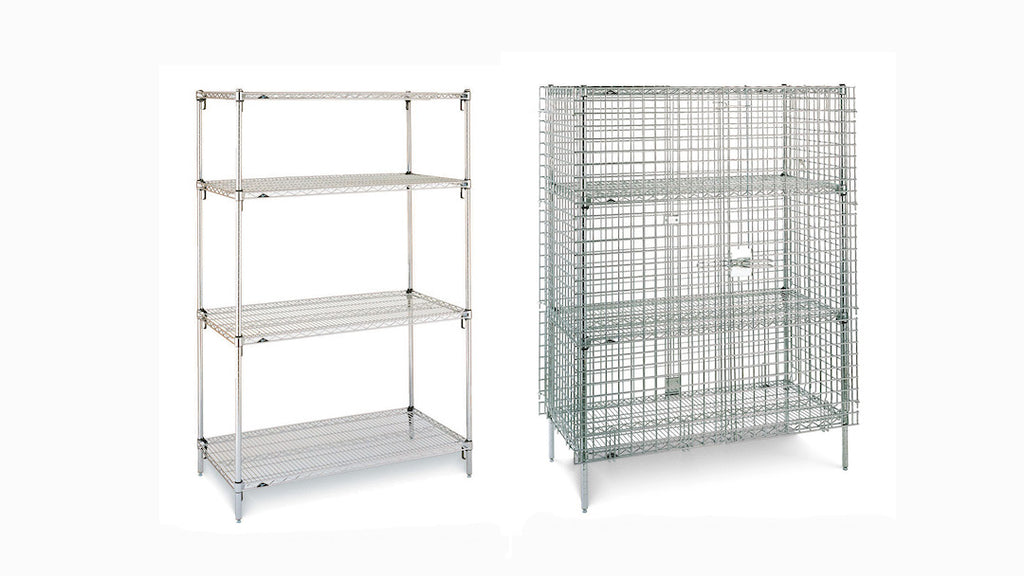
Best Practices for Implementing Industrial Shelving
Conduct a Comprehensive Warehouse Assessment
Begin by conducting an in-depth analysis of your current warehouse setup. Identify inefficiencies, underutilized spaces, and any potential for capacity expansion. This assessment should consider both the physical layout and the flow of operations to identify the optimal shelving solutions that address your specific needs.
Consult with Shelving Experts
Utilizing the expertise of shelving specialists can provide invaluable insights into the most effective solutions for your warehouse. These experts can offer advice on the latest technologies, materials, and designs that can enhance efficiency, safety, and space utilization. They can also help tailor shelving solutions to meet the unique demands of your operations.
Plan for Installation and Maintenance
Proper installation is critical to the performance and safety of your shelving. Ensure that installation is carried out by professionals, following the manufacturer's guidelines. Regular maintenance is equally important; schedule inspections and maintenance to address wear and tear, ensuring that your shelving remains safe and operational over time.
Train Your Team
Finally, the successful integration of new shelving into your warehouse operations hinges on your team's ability to effectively use it. Provide comprehensive training on safe loading techniques, proper handling, and emergency procedures. This not only ensures safety but also maximizes the efficiency and lifespan of your shelving systems.
By meticulously considering these factors and following best practices for implementation, you can ensure that your investment in industrial shelving significantly contributes to the overall efficiency, safety, and productivity of your warehouse operations.
Conclusion
In the realm of warehouse management, the strategic use of industrial shelving cannot be overstated. By choosing the right shelving solutions and adhering to best practices for implementation, you can transform your warehouse into a model of efficiency and productivity. At Hoj Innovations, we're here to guide you every step of the way, ensuring your warehouse operates at its highest potential.




